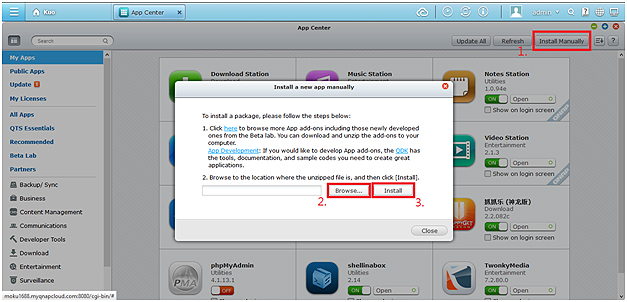

By default, a self-signed certificate (a key) is generated and stored in the current user profile - again, no username and password required ot access it later again. It is unclear if QSnatch was developed to carry out DDoS attacks, to perform hidden cryptocurrency mining, or just as a way to backdoor QNAP devices to sensitive steal files or host malware payloads for future operations. This can work locally on an NTFS file system, or on a Windows system shared folder accessing an NTFS file system again. These features describe the malware's capabilities but don't reveal its end-goal.
#Safeincloud file on qnap update
Prevent future firmware updates by overwriting update source URLs.Modify OS timed jobs and scripts (cronjob, init scripts).Other advice shared by NCSC-FI analysts on dealing with the aftermath of a QSnatch infection include: Change all. In the question What is the best cross-platform password manager KeePass is ranked 3rd while Safe In Cloud is ranked 8th.
#Safeincloud file on qnap code
NCSC-FI members have not yet discovered how this new threat spreads and infects QNAP NAS systems however, once it gains access to a device, QSnatch burrows into the firmware to gain reboot persistence.Īn analysis of the malware's code revealed the following capabilities: QNAP has released a firmware update with QSnatch protections on November 1, 2019. KeePass vs Safe In Cloud FREE 959 327 FREE-9.99 45 16 When comparing KeePass vs Safe In Cloud, the Slant community recommends KeePass for most people. The only report comes from the National Cyber Security Centre of Finland (NCSC-FI), the first cybersecurity organization to spot the malware last week. When using folder encryption, it's about to encrypt the data on the NAS - not to provide additional granular access, something that must be done by ACLs anyway.Information on how QSnatch works is still scant, at the time of writing. The QNAP NAS are - like most others - not Windows based, thus no EFS support. Higher scaling in enterprise levels be done with a Public Key Infrastructure (PKI). This can work locally on an NTFS file system, or on a Windows system shared folder accessing an NTFS file system again. The shared folder name and its first-level subfolders are shown on the left. Select a root folder, for example Public. For all options desafe command will prompt to enter the master password of the database file. It mainly provides a command line utility to be able to read labels and cards, and export the SafeInCloud database in json or xml format. Go to Control Panel > Privilege > Shared Folders > Shared folders. Desafe provides a python utility to decrypt a SafeInCloud database file. When encrypting a folder or a file, Windows does make use of EFS (Encrypting File System). Select Enable Advanced Folder Permissions. Windows does not have any controls to request additional authentication by username and password when accessing a specific folder. This happens regardless if using a plain, and encrypted volume, a plain file system, or an encrypted shared folder. The access rights on Windows are based on an identity - with this identity you can access the NAS shared folders, with the Advanced Folder Permission feature enabled, the access to some folders and files can be restricted to defined groups (or for the sake of it users).


 0 kommentar(er)
0 kommentar(er)
